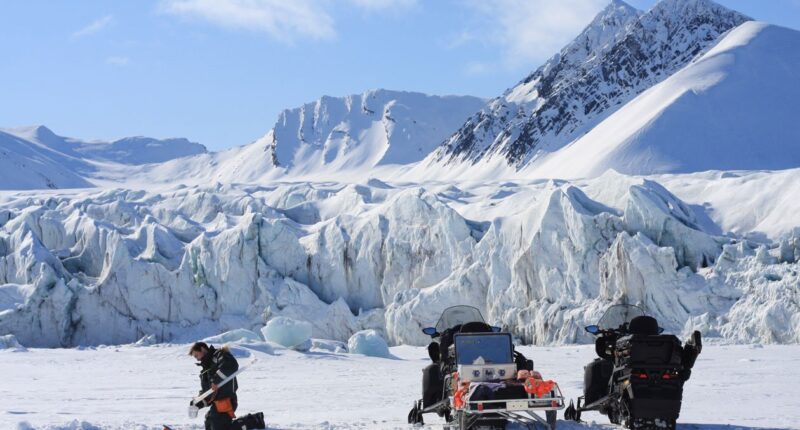
The island of Svalbard, about halfway between mainland Norway and the North Pole, is warming twice as fast as the rest of the Arctic, which itself is warming up to four and a half times faster than the rest of the planet. Scientists just discovered that the island’s retreating glaciers are creating a potentially significant climate feedback loop: When the ice disappears, groundwater that’s supersaturated with methane bubbles to the surface. Methane is an extremely potent greenhouse gas, 80 times as powerful as carbon dioxide. This groundwater can have more than 600,000 times the methane of a cup of water that’s been sitting with its surface exposed to air.
“What that means is that once it hits the atmosphere, it’s going to equilibrate, and it’s going to release as much methane as it can—quickly,” says Gabrielle Kleber, a glacial biogeochemist at University of Cambridge and the University Centre in Svalbard and lead author of a new paper describing the discovery in Nature Geoscience. “It’s about 2,300 tons of methane that’s released annually from springs just on Svalbard. It’s maybe equivalent to something like 30,000 cows.” (Cows burp methane—a lot of it.)
“These numbers, I honestly thought that they were even wrong, but they cannot be wrong,” says Carolina Olid, who studies Arctic methane emissions at the University of Barcelona but wasn’t involved in the work. “Wow, they are really, really high.”
The methane is also coming out of the ground in some places as pressurized gas that Kleber can actually light on fire, as you can see in the video below. “This is a widespread methane emission source that we previously just hadn’t accounted for,” says Kleber. “We can safely assume that this phenomenon is happening in other regions in the Arctic. Once we start extrapolating that and expanding it across the Arctic, we’re looking at something that could be considerable.”
As the Arctic warms rapidly, scientists are finding ways that it’s both suffering from climate change and contributing to it. Like a freezer that’s lost power, the Arctic is thawing, and the stuff inside it is rotting, releasing clouds of greenhouse gasses. When frozen ground known as permafrost thaws, it creates pools of oxygen-poor water, where microbes chew on organic material and burp methane. The warmer it gets up there, the happier these microbes are and the more methane they produce. (In some places, the permafrost is thawing so quickly that it’s even gouging methane-spewing holes in the landscape.)
Elsewhere, vast deposits of the gas are hidden in the ground beneath glaciers. When temperatures get low enough and pressures get high enough, the gas freezes into solid methane hydrate—basically, methane trapped in a cage of ice. That ice, of course, can melt as temperatures rise.
The melting of the glaciers also exposes darker-colored land, which absorbs more of the sun’s energy and accelerates the warming of the terrain—a dreaded climatic feedback loop.








